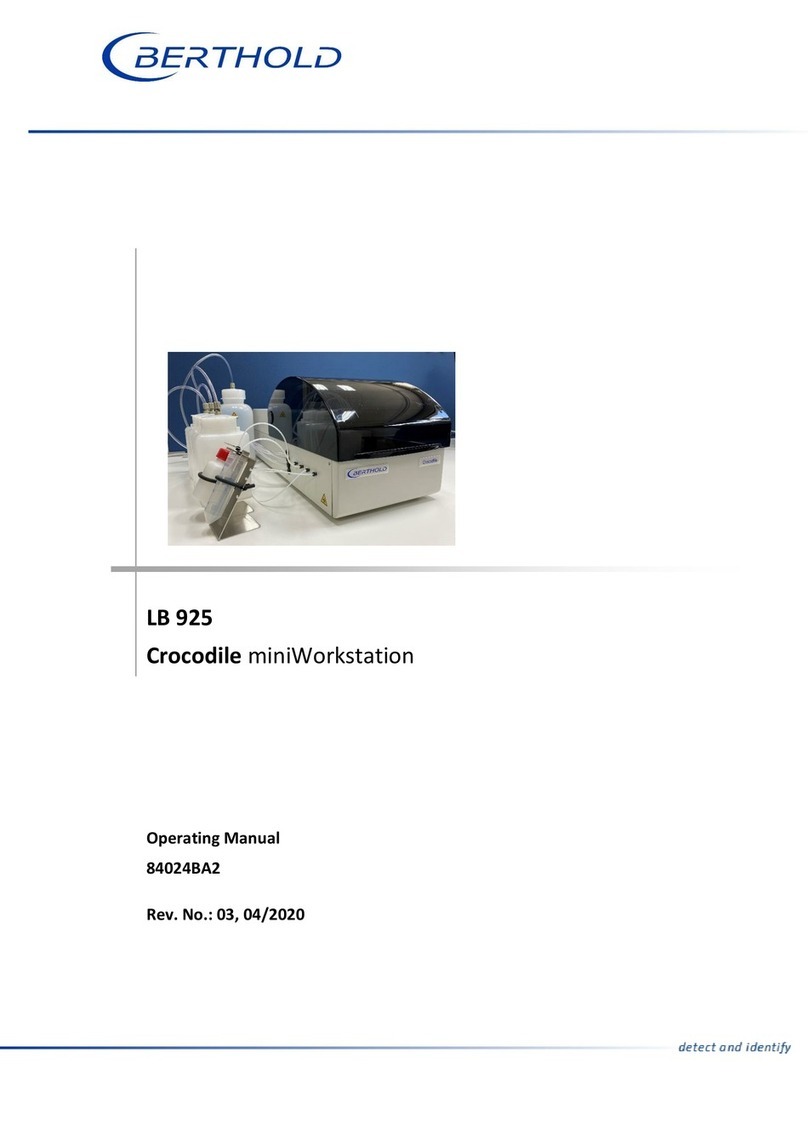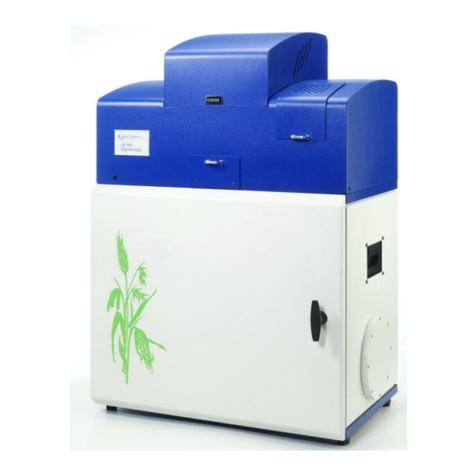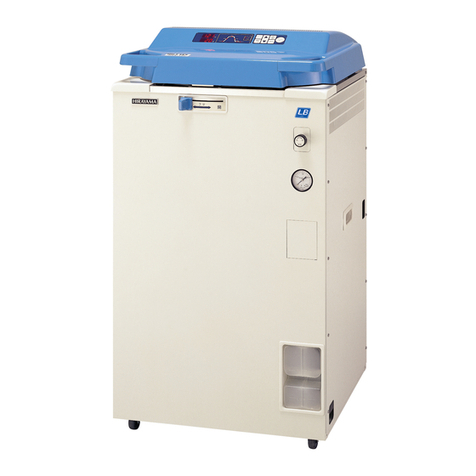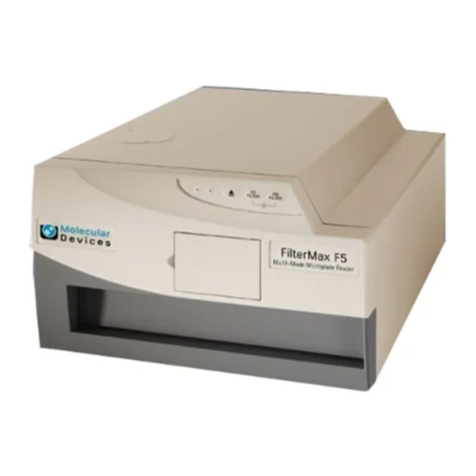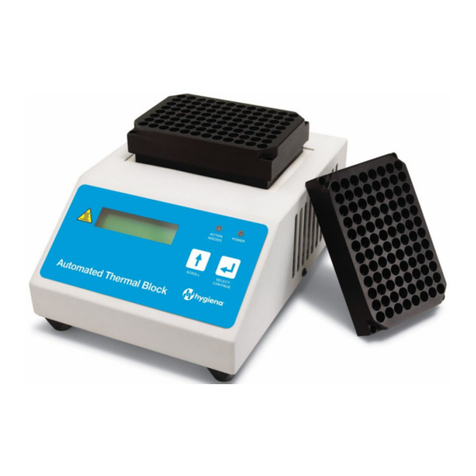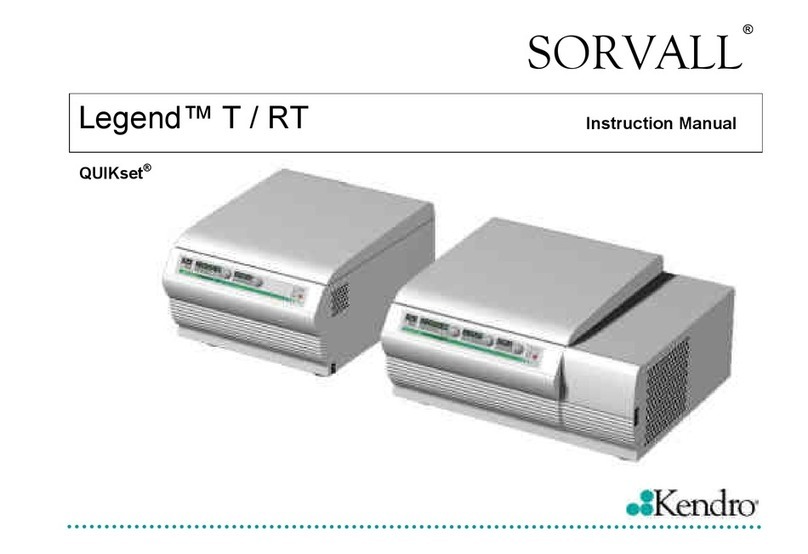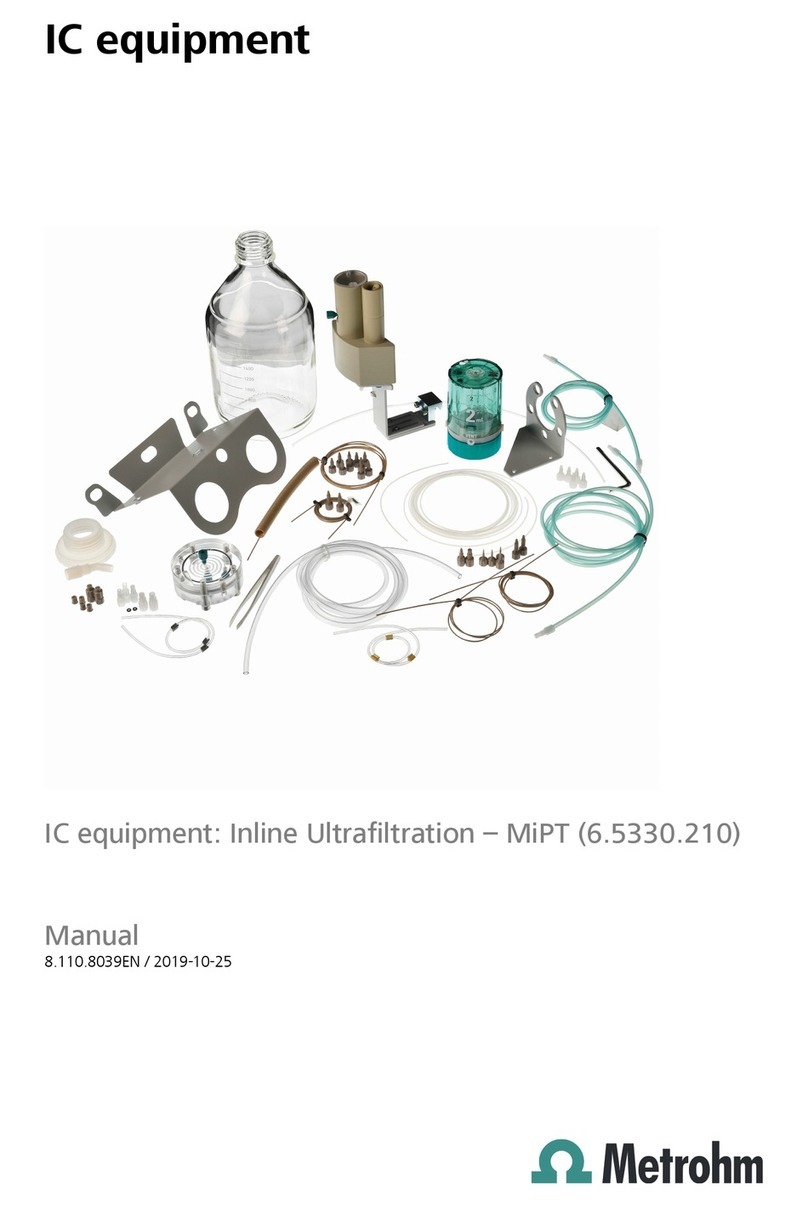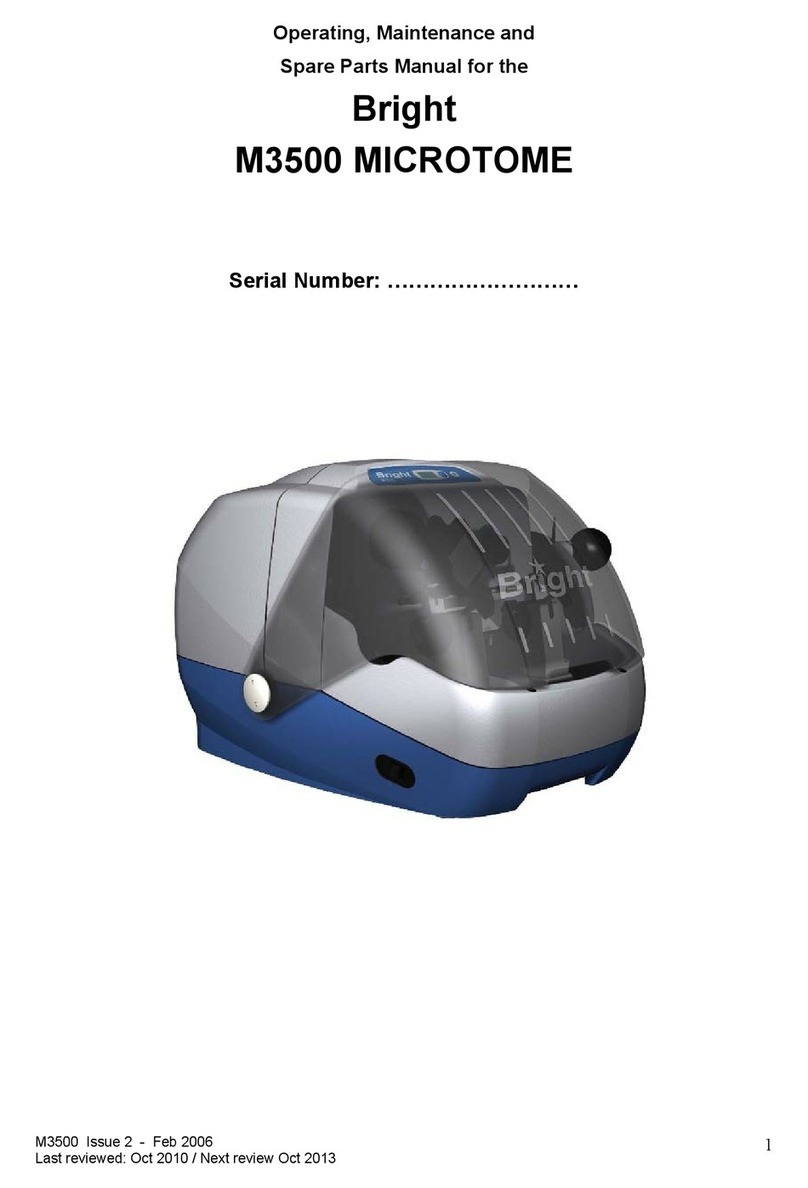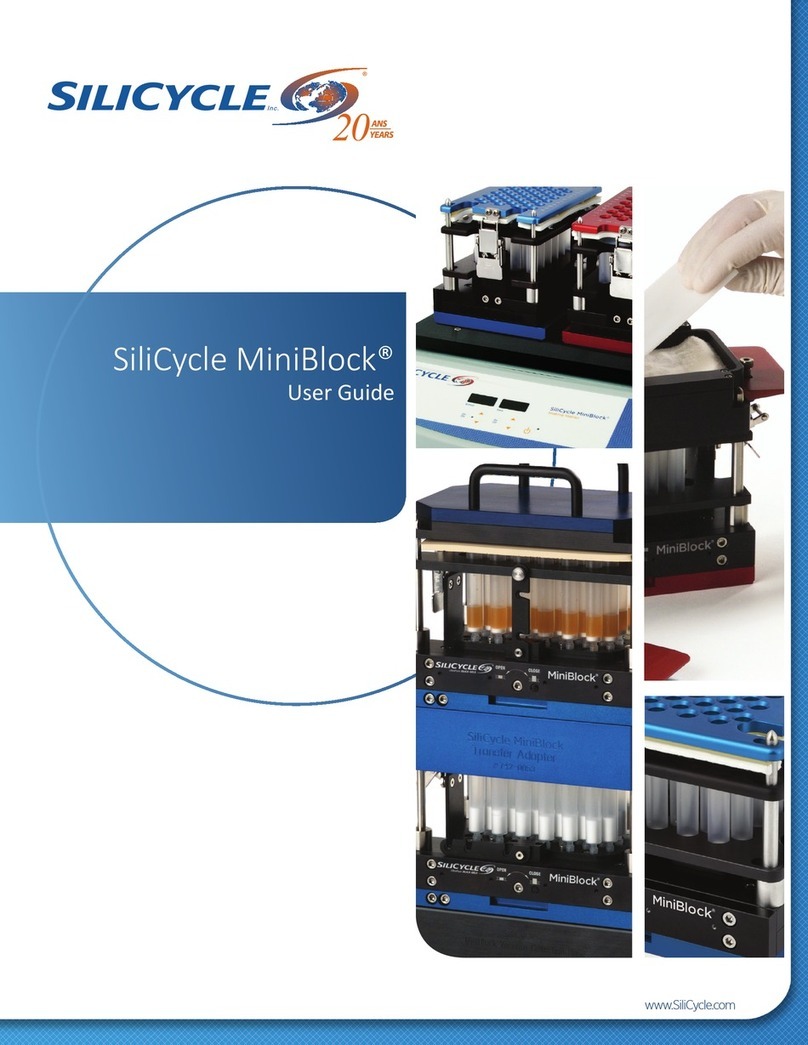Berthold LB 917 User manual

Apollo / Apollo-I Microplate Absorbance Reader
LB 917
Operating Manual
73664BA2
Rev. No.: 00, 05/2022


Not for use in in-vitro diagnostic (IVD) procedures.
The information in this guide is subject to change without notice.
DISCLAIMER
TO THE EXTENT ALLOWED BY LAW, BERTHOLD TECHNOLOGIES AND/OR ITS AFFILIATE(S) WILL NOT BE LIABLE
FOR SPECIAL, INCIDENTAL, INDIRECT, PUNITIVE, MULTIPLE, OR CONSEQUENTIAL DAMAGES IN CONNECTION
WITH OR ARISING FROM THIS DOCUMENT, INCLUDING YOUR USE OF IT.
This instrument is not designed or intended for use with installations or equipment in hazardous
environments. Servicing of the instrument must only be performed by Berthold Technologies Field Service
Engineers or service staff authorized by Berthold Technologies.
Berthold Technologies GmbH & Co. KG
Calmbacher Str. 22
75323 Bad Wildbad, Germany
www.berthold.com/en/bioanalytic/
Telephone +49 (0)7081 177-0
Fax +49 (0)7081 177-100


LB 917 Apollo/Apollo-I
Table of Contents
73664BA2 Rev. 00, 05/2019 5of 58
Table of Contents
1Prefatory Comments ............................................................................................................. 7
1.1 Contact Information.................................................................................................................... 7
1.2 The Operating Manual ................................................................................................................ 7
1.3 Typographical Conventions......................................................................................................... 8
1.3.1 Symbols on the instrument......................................................................................................... 8
1.3.2 Warnings, Notes and Symbols used in this Manual.................................................................... 8
1.4 Connections at the instrument ................................................................................................... 9
2Important Information ........................................................................................................ 10
2.1 Intended Use............................................................................................................................. 10
2.2 Safety Instructions and Precautions ......................................................................................... 10
2.3 Consignes de Sécurité ............................................................................................................... 12
2.4 Sicherheitshinweise .................................................................................................................. 14
2.5 Further Instructions .................................................................................................................. 16
3General description............................................................................................................. 17
3.1 Features and Benefits ............................................................................................................... 17
3.2 Product Overview ..................................................................................................................... 17
4Getting Started.................................................................................................................... 19
4.1 Unpacking ................................................................................................................................. 19
4.2 Setup and Installation............................................................................................................... 19
5General Operation .............................................................................................................. 20
5.1 Instrument self-check ............................................................................................................... 20
5.2Protocol interface ..................................................................................................................... 20
5.2.1 File Management ...................................................................................................................... 21
5.2.2 Function Keys............................................................................................................................ 23
5.3 Perform a measurement........................................................................................................... 23
6Setup a protocol.................................................................................................................. 25
6.1 Define measurement parameters............................................................................................. 25
6.2 Define the Layout...................................................................................................................... 27
6.2.1 Plate Layout .............................................................................................................................. 27
6.2.2 Define standard concentrations ............................................................................................... 28
6.3 Define shake settings................................................................................................................ 30
6.4 Calculations............................................................................................................................... 31
6.4.1 Kinetic ....................................................................................................................................... 31
6.4.2 Preprocess calculation .............................................................................................................. 34
6.4.3 Curve fitting .............................................................................................................................. 34
6.5 Interpret.................................................................................................................................... 35
6.6 Quality Control.......................................................................................................................... 36
6.7 Incubator settings (Apollo-I only) ............................................................................................. 37
7Results ................................................................................................................................ 38
7.1 Results interface ....................................................................................................................... 38
7.1.1 Raw Data................................................................................................................................... 38
7.1.2 Interpret results ........................................................................................................................ 39
7.1.3 Analysis ..................................................................................................................................... 40
7.1.4 Curve......................................................................................................................................... 40
7.1.5 QC results.................................................................................................................................. 41
7.2 Kinetic Results interface ........................................................................................................... 41
7.2.1 Kinetic Raw Data ....................................................................................................................... 41
7.2.2 Kinetic Analysis ......................................................................................................................... 42

Table of Contents
LB 917 Apollo/Apollo-I
6of 58 73664BA2 Rev. 00, 05/2022
7.2.3 Kinetic Curve ............................................................................................................................. 42
8Settings ............................................................................................................................... 43
8.1 Language................................................................................................................................... 43
8.2 Filter.......................................................................................................................................... 43
8.3 Maintenance of microplate drawer.......................................................................................... 45
8.4 Print .......................................................................................................................................... 45
8.5 Date&Time................................................................................................................................ 46
9Help..................................................................................................................................... 47
10 Maintenance of the instrument .......................................................................................... 48
10.1 Light source replacement ......................................................................................................... 48
10.2 Adding optical filters (optional) ................................................................................................ 49
10.3 Cleaning and Decontamination of the instrument ................................................................... 50
11 Trouble Shooting................................................................................................................. 51
12 Technical Data..................................................................................................................... 52
13 Preparing for Transport....................................................................................................... 54
14 Warranty and Technical Issues ............................................................................................ 55
14.1 Special spare parts.................................................................................................................... 55
14.2 Warranty statement ................................................................................................................. 55
14.3 Customer service ...................................................................................................................... 55
14.4 Return Shipment to Berthold Technologies.............................................................................. 56
15 Index ................................................................................................................................... 57

LB 917 Apollo/Apollo-I 1 Prefatory Comments
73664BA2 Rev. 00, 05/2022 7of 58
1 Prefatory Comments
1.1 Contact Information
Berthold Technologies GmbH & Co. KG
Calmbacher Str. 22
75323 Bad Wildbad
Germany
Sales and Customer Service
Internet: www.berthold.com
Phone: +49 (0)7081 177-0
Fax: +49 (0)7081 177-100
Central Customer Service
Phone: +49 (0)7081 177-111
Fax: +49 (0)7081 177-339
1.2 The Operating Manual
This operation manual is valid for both, LB 917 Apollo and LB 917 Apollo-I (with heating) from
the delivery of the Berthold product to the user until its disposal. Version and release date of
this operating manual can be found in the bottom of each page.
Read all instructions thoroughly and completely before working with the product. Keep the
operating manual for future reference.
The information in this guide is subject to change without notice. However, should questions
Copyright
This document is copyright protected. None of the chapters may be copied or reproduced in
any other form without prior authorization from the manufacturer.
Revision history of the Operating Manual 73664BA2
Revision, Date
Changes
Rev 00, 05/2022
Initial version

1 Prefatory Comments
LB 917 Apollo/Apollo-I
8of 58 73664BA2 Rev. 00, 05/2022
1.3 Typographical Conventions
1.3.1 Symbols on the instrument
Symbols
Description
Warning –Biological hazard
Warning –general warning, risk of danger
This product bears the CE mark, based on conformity to current EC legisla-
tion and stated on the declaration of conformity.
No domestic waste. The electronic product must not be disposed of in do-
mestic waste.
Depending on the instrument configuration (with/without incubator) additional informative la-
bels are located below the front door.
Example for LB 917 Apollo-I:
1.3.2 Warnings, Notes and Symbols used in this Manual
CAUTION
Refers to a potentially dangerous situation, which can result in medium or minor physical
injuries or damages to property, if it is not avoided.
NOTICE
If this information is not observed, deterioration in the operation and/or property
damage may occur.
IMPORTANT
Sections marked with this symbol point out important information on the product or on
handling the product.
Symbols
Description
⚫
Enumerations
1)
Actions
< >
Icon buttons
[ ]
Tab Pages, Menu items, dialog boxes and select lists

LB 917 Apollo/Apollo-I 1 Prefatory Comments
73664BA2 Rev. 00, 05/2022 9of 58
1.4 Connections at the instrument
LB 917 is equipped with a USB port, a COM port and a LAN port, as well as a Print port at the
right side of the cover.
The power socket is located at the rear side.
See chapter 3.2, Fig 2, for details.

2 Important Information
LB 917 Apollo/Apollo-I
10 of 58 73664BA2 Rev. 00, 05/2022
2 Important Information
2.1 Intended Use
The Apollo/Apollo-I microplate reader is used for absorbance measurements in colorimetric
Enzyme-Linked Immunosorbent Assays (ELISA). Depending on the selected test, sample con-
centrations can be calculated out of the absorbance values (quantitative analysis), or samples
can be classified according to Cut-Off thresholds as positive or negative (qualitative analysis).
In addition, the kinetic course of the reaction can be determined.
The device is for use in scientific research, food and environmental research or agriculture.
CAUTION
LB 917 Apollo /Apollo-I must not be used for in vitro diagnostics.
LB 917 Apollo/Apollo-I must not be used for any other purpose than those described in
this manual.
2.2 Safety Instructions and Precautions
CAUTION
Please adhere to the following safety instructions and precautions before and during op-
eration of the system or taking the instrument into service.
•The instruments have been calibrated and tested and are supplied in a condition that
allows safe and reliable operation of the equipment, both electrically and mechanically,
if the user follows the instructions set forth in this manual.
•The person, responsible for bringing the instrument to market, must assure, that the
safety instructions and precautions of this manual are communicated to the user.
•Only qualified trained personnel may operate and maintain the instrument.
•It is strongly recommended that all users read this manual prior to use. This Operating
Manual includes information and warnings to be observed by the user to ensure safe
operation of the instruments. Improper operation of the instrument may cause injury
or electric shock.
•The operation, maintenance and repair of the Instrument should comply with the basic
guidelines and the warnings in this manual. Incorrect operation and maintenance will
have effect on the lifetime, performance and safety features of the Instrument.
•If legal regulations exist for the installation and/or use of sample measuring instru-
ments in the country of installation, the installer and the operator are responsible for
observing these regulations.
•The user must ensure that the instruments are set up and installed in such a way that
their function is not impaired. Please refer to the instrument’s installation description
in chapter 4.2.
•Use only the accessories, particularly the power cords, supplied with the instrument or
by Berthold Technologies for working with this instrument, for operation.
•Never connect the power cord near liquids to avoid electric shock or fire. The power
cord must not get wet!

LB 917 Apollo/Apollo-I 2 Important Information
73664BA2 Rev. 00, 05/2022 11 of 58
•The power cord may only be connected to a socket outlet that complies with the local
regulations of the country where the unit is installed and supplies voltage and current
as specified in the system specification. See chapter12.
•Berthold Technologies assumes no liability for any damages, including those to third
parties, caused by improper installation, use or handling of the device. The instruments
are live and improper handling may cause damage.
•The instrument should be installed in a location with less dust and away from wet areas,
direct sunlight or strong light sources. The installation location should be well venti-
lated and be away from electromagnetic interferences and heat sources.
•Use the instrument only for the intended applications. Please read the information on
the Intended Use and the restrictions.
•The instruments are for indoor use only. They must be operated in a laboratory envi-
ronment by trained and experienced personnel only.
•The instrument is equipped with a ventilator designed for proper cooling of the internal
components. Do not cover the ventilator or place the instrument in a location where
the ventilator can be blocked.
•The user must assure that assays are validated with the system prior to use.
•Some assays, assay components or specimen may potentially present a biohazard, in-
fection risk or other type of hazard to the user. Always follow the safety precautions as
specified in the test system enclosure, e.g., for performance and temperature range.
Wear appropriate protective equipment like laboratory coats or chemically resistant
rubber gloves and work responsibly to avoid injuries such as chemical burns or contam-
ination.
•Explosive and flammable substances must not be used with the instrument.
•Avoid moisture to prevent corrosion.
•Avoid splashing liquids on the outer surfaces. Wipe away all splashes immediately and
decontaminate the surfaces.
•Avoid injury. Keep your body and hands away from the motorized sample drawer and
other moving parts during operation.
•Power off the instrument when you finish your work.
•When handling cleaning and decontamination agents, the safety instructions of the re-
agent supplier must be followed. Wear appropriate protective equipment. Also read
chapter 10.3 of this manual.
•The user may only carry out the maintenance work described in the Maintenance chap-
ter. The user must not open the housing of the instruments.
•The operator should not open or repair the Instrument by himself. Don’t drive off any
screws or parts. This may damage the instrument and will void the warranty. If service
is required, contact the Berthold Technologies service or your local distributor.
•Switch off the instrument before disconnecting the plug. Hold the socket when you pull
out the plug and don’t pull the power cord only.
•If the instrument is not in use for a longer period of time, disconnect it from mains and
cover it to protect it against dust.
•Disconnect the power supply from mains at once in the following cases:
oLiquid has entered the instrument
oAbnormal sound or smell appears
oInstrument dropped or outer housing is damaged
oMalfunction detected
oOverheating detected
oDefective insulation sheath of cables
Do not operate the instrument anymore and call the service. Please read Chapter 14.3.
•Prior to repair or maintenance, the instrument must be cleaned and decontaminated
to prevent service personnel from contact with potentially hazardous materials.

2 Important Information
LB 917 Apollo/Apollo-I
12 of 58 73664BA2 Rev. 00, 05/2022
•All service and maintenance work beyond the scope of this manual may only be carried
out by service technicians trained and authorized by Berthold Technologies. Before fur-
ther use, the instrument must be reassembled and inspected in accordance with the
instructions in the service manual.
•Only parts specified by Berthold Technologies may be used for maintenance and ser-
vice.
•Always disconnect the plug before opening the device for service or modifications.
2.3 Consignes de Sécurité
CAUTION
Veuillez respecter les consignes de sécurité et les précautions suivantes avant et pendant
l'utilisation du système ou la mise en service de l'appareil.
•Les instruments ont été calibrés et testés et sont fournis dans un état qui permet un
fonctionnement sûr et fiable de l'équipement, tant sur le plan électrique que méca-
nique, si l'utilisateur suit les instructions énoncées dans ce manuel.
•La personne responsable de la mise sur le marché de l'instrument doit s'assurer que les
instructions et les précautions de sécurité de ce manuel sont communiquées à l'utilis-
ateur.
•Seul un personnel qualifié et formé peut utiliser et entretenir l'instrument.
•Il est fortement recommandé à tous les utilisateurs de lire ce manuel avant de l'utiliser.
Ce manuel d'utilisation comprend des informations et des avertissements que l'utilis-
ateur doit respecter pour assurer un fonctionnement sûr des instruments. Une
utilisation incorrecte de l'instrument peut entraîner des blessures ou un choc élec-
trique.
•Le fonctionnement, la maintenance et la réparation de l'instrument doivent être con-
formes aux directives de base et aux avertissements de ce manuel. Un fonctionnement
et un entretien incorrects auront un effet sur la durée de vie, les performances et les
caractéristiques de sécurité de l'instrument.
•Si des réglementations légales existent pour l'installation et/ou l'utilisation d'instru-
ments de mesure d'échantillons dans le pays d'installation, l'installateur et l'opérateur
sont responsables du respect de ces réglementations.
•L'utilisateur doit s'assurer que les instruments sont configurés et installés de manière
à ce que leur fonction ne soit pas altérée. Veuillez vous reporter à la description de
l'installation de l'instrument au chapitre 4.2.
•Pour le fonctionnement, n'utilisez que les accessoires, en particulier les cordons d'ali-
mentation, fournis avec l'instrument ou par Berthold Technologies pour travailler avec
cet instrument.
•Ne branchez jamais le cordon d'alimentation à proximité de liquides afin d'éviter tout
choc électrique ou incendie. Le cordon d'alimentation ne doit pas être mouillé !
•Le cordon d'alimentation ne doit être connecté qu'à une prise de courant conforme aux
réglementations locales du pays où l'appareil est installé et fournissant la tension et le
courant spécifiés dans les spécifications du système. Voir le chapitre 12.
•Berthold Technologies n'assume aucune responsabilité pour les dommages, y compris
ceux causés à des tiers, causés par une installation, une utilisation ou une manipulation
incorrectes de l'appareil. Les instruments sont sous tension et une manipulation incor-
recte peut provoquer des dommages.

LB 917 Apollo/Apollo-I 2 Important Information
73664BA2 Rev. 00, 05/2022 13 of 58
•L'instrument doit être installé dans un endroit moins poussiéreux et éloigné des zones
humides, de la lumière directe du soleil ou de sources lumineuses fortes. Le lieu d'in-
stallation doit être bien ventilé et éloigné des interférences électromagnétiques et des
sources de chaleur.
•N'utilisez l'instrument que pour les applications prévues. Veuillez lire les informations
relatives à l'utilisation prévue et aux restrictions.
•Les instruments sont destinés à une utilisation en intérieur uniquement. Ils doivent être
utilisés dans un environnement de laboratoire par un personnel formé et expérimenté
uniquement.
•L'instrument est équipé d'un ventilateur conçu pour refroidir correctement les compo-
sants internes. Ne pas couvrir le ventilateur ou placer l'instrument dans un endroit où
le ventilateur peut être bloqué.
•L'utilisateur doit s'assurer que les tests sont validés avec le système avant de les utiliser.
•Certains tests, composants de tests ou échantillons peuvent potentiellement présenter
un risque biologique, un risque d'infection ou un autre type de danger pour l'utilisateur.
Respectez toujours les précautions de sécurité spécifiées dans le boîtier du système de
test, par exemple, pour les performances et la plage de température. Portez des
équipements de protection appropriés, tels que des blouses de laboratoire ou des
gants en caoutchouc résistant aux produits chimiques, et travaillez de manière re-
sponsable pour éviter les blessures telles que les brûlures chimiques ou la
contamination.
•Les substances explosives et inflammables ne doivent pas être utilisées avec l'instru-
ment.
•Évitez l'humidité pour prévenir la corrosion.
•Évitez les projections de liquides sur les surfaces extérieures. Essuyez immédiatement
toute éclaboussure et décontaminez les surfaces.
•Évitez les blessures. Maintenez votre corps et vos mains à l'écart du tiroir à échantillons
motorisé et des autres pièces mobiles pendant le fonctionnement.
•Mettez l'instrument hors tension lorsque vous avez terminé votre travail.
•Lors de la manipulation de produits de nettoyage et de décontamination, il convient de
respecter les consignes de sécurité du fournisseur de réactifs. Portez un équipement
de protection approprié. Lisez également le chapitre 10.1.3 de ce manuel.
•L'utilisateur ne peut effectuer que les travaux d'entretien décrits dans le chapitre En-
tretien. L'utilisateur ne doit pas ouvrir le boîtier des instruments.
•L'utilisateur ne doit pas ouvrir ou réparer l'instrument par lui-même. N'arrachez aucune
vis ou pièce. Cela pourrait endommager l'instrument et annulerait la garantie. Si une
réparation est nécessaire, contactez le service après-vente de Berthold Technologies
ou votre distributeur local.
•Éteignez l'instrument avant de débrancher la fiche. Tenez la prise lorsque vous retirez
la fiche et ne tirez pas uniquement sur le cordon d'alimentation.
•Si l'instrument n'est pas utilisé pendant une période prolongée, débranchez-le du
secteur et couvrez-le pour le protéger de la poussière.
•Débranchez immédiatement l'alimentation du réseau dans les cas suivants :
oDu liquide a pénétré dans l'instrument
oUn son ou une odeur anormale apparaît
oL'instrument est tombé ou le boîtier extérieur est endommagé
oDétection d'un dysfonctionnement
oSurchauffe détectée
oGaine isolante des câbles défectueuse
N'utilisez plus l'instrument et appelez le service après-vente. Veuillez lire le chapitre
14.3

2 Important Information
LB 917 Apollo/Apollo-I
14 of 58 73664BA2 Rev. 00, 05/2022
•Avant toute réparation ou maintenance, l'instrument doit être nettoyé et décontaminé
pour éviter que le personnel de service n'entre en contact avec des matériaux poten-
tiellement dangereux.
•Tous les travaux d'entretien et de maintenance dépassant le cadre de ce manuel ne
doivent être effectués que par des techniciens de service formés et autorisés par
Berthold Technologies. Avant toute nouvelle utilisation, l'instrument doit être remonté
et inspecté conformément aux instructions du manuel d'entretien.
•Seules les pièces spécifiées par Berthold Technologies peuvent être utilisées pour l'en-
tretien et le service.
•Débranchez toujours la fiche avant d'ouvrir l'appareil pour l'entretien ou les modifica-
tions.
2.4 Sicherheitshinweise
CAUTION
Bitte beachten Sie die folgenden Sicherheitshinweise und Vorsichtsmaßnahmen vor und
während des Betriebs des Systems oder der Inbetriebnahme des Geräts.
•Die Geräte wurden kalibriert und geprüft und werden in einem Zustand ausgeliefert,
der einen sicheren und zuverlässigen Betrieb des Geräts sowohl in elektrischer als auch
in mechanischer Hinsicht ermöglicht, wenn der Benutzer die in diesem Handbuch auf-
geführten Anweisungen befolgt.
•Die Person, die für das Inverkehrbringen des Geräts verantwortlich ist, muss sicherstel-
len, dass die Sicherheitsanweisungen und -vorkehrungen dieses Handbuchs an den
Benutzer weitergegeben werden.
•Nur qualifiziertes Fachpersonal darf das Gerät bedienen und warten.
•Es wird dringend empfohlen, dass alle Benutzer dieses Handbuch vor dem Gebrauch
lesen. Diese Bedienungsanleitung enthält Informationen und Warnhinweise, die vom
Benutzer zu beachten sind, um einen sicheren Betrieb des Geräts zu gewährleisten.
Eine unsachgemäße Bedienung des Geräts kann zu Verletzungen oder Stromschlägen
führen.
•Der Betrieb, die Wartung und die Reparatur des Geräts sollten in Übereinstimmung mit
den grundlegenden Richtlinien und den Warnhinweisen in diesem Handbuch erfolgen.
Eine unsachgemäße Bedienung und Wartung hat Auswirkungen auf die Lebensdauer,
die Leistung und die Sicherheitsmerkmale des Geräts.
•Bestehen im Aufstellungsland gesetzliche Vorschriften für die Installation und/oder
Verwendung von Probenmessgeräten, so sind der Installateur und der Betreiber für die
Einhaltung dieser Vorschriften verantwortlich.
•Der Anwender muss sicherstellen, dass die Geräte so aufgestellt und installiert werden,
dass ihre Funktion nicht beeinträchtigt wird. Bitte beachten Sie die Installationsbe-
schreibung des Gerätes in Kapitel 4.2.
•Verwenden Sie für den Betrieb nur das Zubehör, insbesondere die Netzkabel, das mit
dem Gerät oder von Berthold Technologies für die Arbeit mit diesem Gerät geliefert
wurde.
•Schließen Sie das Netzkabel niemals in der Nähe von Flüssigkeiten an, um einen elektri-
schen Schlag oder Brand zu vermeiden. Das Netzkabel darf nicht nass werden!
•Das Netzkabel darf nur an eine Steckdose angeschlossen werden, die den örtlichen Vor-
schriften des Landes entspricht, in dem das Gerät installiert wird, und die die in der
Systemspezifikation angegebene Spannung und Stromstärke liefert. Siehe Kapitel 12.

LB 917 Apollo/Apollo-I 2 Important Information
73664BA2 Rev. 00, 05/2022 15 of 58
•Berthold Technologies übernimmt keine Haftung für Schäden, auch nicht gegenüber
Dritten, die durch unsachgemäße Installation, Verwendung oder Handhabung des Ge-
räts entstehen. Die Geräte stehen unter Spannung und eine unsachgemäße
Handhabung kann zu Schäden führen.
•Das Gerät sollte an einem staubarmen Ort und fern von Nässe, direktem Sonnenlicht
oder starken Lichtquellen installiert werden. Der Installationsort sollte gut belüftet und
von elektromagnetischen Störungen und Wärmequellen entfernt sein.
•Verwenden Sie das Gerät nur für die vorgesehenen Anwendungen. Bitte lesen Sie die
Informationen über den Verwendungszweck und die Einschränkungen.
•Die Geräte sind nur für den Gebrauch in Innenräumen bestimmt. Sie dürfen nur von
geschultem und erfahrenem Personal in einer Laborumgebung betrieben werden.
•Das Gerät ist mit einem Ventilator ausgestattet, der für die richtige Kühlung der inneren
Komponenten sorgt. Decken Sie den Ventilator nicht ab und stellen Sie das Gerät nicht
an einem Ort auf, an dem der Ventilator blockiert werden kann.
•Der Benutzer muss sicherstellen, dass chemische Tests vor ihrer Verwendung mit dem
System validiert werden.
•Einige Testsysteme, Test-Komponenten oder Proben können eine biologische Gefahr,
ein Infektionsrisiko oder eine andere Art von Gefahr für den Benutzer darstellen. Befol-
gen Sie stets die Sicherheitsvorkehrungen, die in der Packungsbeilage des Testsystems
angegeben sind, z. B. für Leistung und Temperaturbereich. Tragen Sie geeignete Schutz-
ausrüstung wie Laborkittel oder chemikalienbeständige Gummihandschuhe und
arbeiten Sie verantwortungsbewusst, um Verletzungen wie Verätzungen oder Konta-
minationen zu vermeiden.
•Explosive und entflammbare Stoffe dürfen nicht mit dem Gerät verwendet werden.
•Vermeiden Sie Feuchtigkeit, um Korrosion zu verhindern.
•Vermeiden Sie Flüssigkeitsspritzer auf den Außenflächen. Wischen Sie alle Spritzer so-
fort weg und dekontaminieren Sie die Oberflächen.
•Vermeiden Sie Verletzungen. Halten Sie Ihren Körper und Ihre Hände während des Be-
triebs von der motorisierten Probenschublade und anderen beweglichen Teilen fern.
•Schalten Sie das Gerät aus, wenn Sie Ihre Arbeit beendet haben.
•Beim Umgang mit Reinigungs- und Dekontaminationsmitteln sind die Sicherheitshin-
weise des Reagenzienlieferanten zu beachten. Tragen Sie eine geeignete
Schutzausrüstung. Lesen Sie auch Kapitel 10.1.3 dieses Handbuchs.
•Der Benutzer darf nur die im Kapitel Maintenance beschriebenen Wartungsarbeiten
durchführen. Der Benutzer darf das Gehäuse der Geräte nicht öffnen.
•Der Benutzer darf das Instrument nicht selbst öffnen oder reparieren. Es dürfen keine
Schrauben oder Teile herausgedreht werden. Dies kann das Instrument beschädigen
und führt zum Erlöschen der Garantie. Wenden Sie sich im Servicefall an den Service
von Berthold Technologies oder an Ihren örtlichen Händler.
•Schalten Sie das Gerät aus, bevor Sie den Stecker abziehen. Halten Sie die Steckdose
fest, wenn Sie den Stecker herausziehen und ziehen Sie nicht nur am Netzkabel.
•Wenn das Gerät längere Zeit nicht benutzt wird, trennen Sie es vom Stromnetz und
decken Sie es ab, um es vor Staub zu schützen.
•Trennen Sie das Gerät in folgenden Fällen sofort vom Stromnetz:
oFlüssigkeit ist in das Gerät eingedrungen
oUngewöhnliche Geräusche oder Gerüche treten auf
oDas Gerät ist heruntergefallen oder das äußere Gehäuse ist beschädigt.
oFehlfunktion festgestellt
oÜberhitzung festgestellt
oDefekter Isoliermantel von Kabeln
Nehmen Sie das Gerät nicht mehr in Betrieb und rufen Sie den Service an. Bitte lesen
Sie Kapitel 14.3.

2 Important Information
LB 917 Apollo/Apollo-I
16 of 58 73664BA2 Rev. 00, 05/2022
•Vor der Reparatur oder Wartung muss das Gerät gereinigt und dekontaminiert werden,
um den Kontakt des Servicepersonals mit potenziell gefährlichen Stoffen zu vermeiden.
•Alle Service- und Wartungsarbeiten, die über den Umfang dieses Handbuchs hinausge-
hen, dürfen nur von Servicetechnikern durchgeführt werden, die von Berthold
Technologies geschult und autorisiert wurden. Vor der weiteren Verwendung muss das
Gerät gemäß den Anweisungen in der Serviceanleitung wieder zusammengebaut und
überprüft werden.
•Für Wartung und Service dürfen nur von Berthold Technologies spezifizierte Teile ver-
wendet werden.
•Ziehen Sie immer den Netzstecker, bevor Sie das Gerät für Servicearbeiten oder Ände-
rungen öffnen.
2.5 Further Instructions
Storage conditions:
Before delivery or if the instrument is not used for a longer period, store it in the original card-
board box in a dry and dust-free environment, well-ventilated and free of any corrosive gasses.
Protect the instrument from direct sunlight, significant temperature fluctuations and strong
electromagnetic interference sources!
Storage temperature: -10°C –+45°C, relative humidity less than 80%, not-condensing,
Transport conditions:
-10°C –+ 45°C, in original cardboard box and free of liquids. Avoid heavy shock, vibration, and
humidity during transportation.
Quality control
It is considered good laboratory practice to run laboratory samples according to instructions
and specific recommendations included in the package insert of the reagent kit or the standard
laboratory protocol for the test to be conducted. Control measurements of commercially avail-
able test kits should be performed according to the kit insert instructions after installation and
regularly furthermore during lifetime of the instrument. If a test kit is not available, it is recom-
mended to measure a Blank and a known laboratory sample in exchange. A failure in the
performance of Quality Control checks could result in erroneous test data.
Disposal
Decontaminate the instrument before disposal! This absorbance reader contains electronic
parts. To prevent environmental pollution please dispose the instrument and the correspond-
ing accessories according to local legislation. Within the EC dispose the instrument and
accessories according to the WEEE directive. If questions appear, e.g., in terms of recycling,
contact Berthold Technologies or its local representative for further information.
Disposal of chemical waste
Please dispose chemical or potentially hazardous waste always carefully and according to local
legislation. It is recommended to treat potential biohazard waste by autoclave

LB 917 Apollo/Apollo-I 3 General description
73664BA2 Rev. 00, 05/2022 17 of 58
3 General description
The Apollo/Apollo-I microplate reader measures absorbance in colorimetric Immuno Assays.
The measurements are performed in 96 well microplates. Measurements can be performed
using onboard software on the device.
3.1 Features and Benefits
•Easy to use: 7 ‘’ color touch screen and 3 external keys.
•Operating system allows collection, editing and saving of data.
•Instrument can be used as standalone device or connected to PC using the PC software.
If used in stand-alone mode data can be transferred to PC by USB drive.
•8 position optical filter wheel, equipped with 4 standard optical filters (405nm, 450nm,
492nm, 630nm); additional optional filters are available for installation by the user.
•8 channel vertical optical path, zero dispersion single mode fiber measurement system,
automatic plate well center position function.
•96-well visual layout allows setting of blank, sample, positive/negative control, quality
control and multi-value control.
•Multi-choice tests on single plate.
•Single or double wavelength measurement.
•Self-checking optical path, mechanical motion, top reading.
•Plate shaking function, time and speed are adjustable.
•Energy saving light source (Quartz halogen lamp)
•Multiple data export ports.
•Measurement results can be exported as .CSV file to MS Excel.
•Apollo-I only: The device is equipped with a built-in incubator.
3.2 Product Overview
Before first use of the instrument, please view the figures and read this chapter carefully.
Scheme: Front view
Touch screen
Top of rear panel
Housing
Bottom plate
Control buttons
Front door
Front panel
Plate holder

3 General description
LB 917 Apollo/Apollo-I
18 of 58 73664BA2 Rev. 00, 05/2022
Scheme: Side and rear view
Function
Control button
Start, Stop and Plate in/out
Plate holder
Carries a 96 well microplate
Print port
For connection of an external printer
USB port
For connection of USB stick or mouse
COM port
For connection to external PC
LAN port
Ethernet port
Rear panel
door
For service. For access to optical filter wheel or replacement of light
source.
Door knob
To open back door.
Table: Description of buttons and connections
Rear panel door
Rear doorknob
Power inlet and
main switch
USB and print port
COM port
LAN port

LB 917 Apollo/Apollo-I 4 Getting Started
73664BA2 Rev. 00, 05/2022 19 of 58
4 Getting Started
4.1 Unpacking
Each Apollo/Apollo-I is thoroughly tested before shipping. Please check the package again when
you receive the instrument and contact your local distributor or manufacturer if:
•The outer package is damaged
•The outer package shows traces of moisture
•The outer package has marks of impact
•The outer package has signs of being opened
After opening, please check the instrument and the accessories content.
•Confirm that the accessories have been included according to the packing list.
•Check the instrument’s appearance for any damage.
4.2 Setup and Installation
Perform the following steps:
1. Locate the instrument on a flat dry and clean worktable with a stable and level surface,
keeping the front side with enough space for the plate holder to move in and out. Also
keep 15 cm space for back, left and right side for ventilation and for connecting the ca-
bles.
CAUTION
Keep the instrument away from corrosive gasses and liquids.
2. Operating conditions:
The environment should be free of corrosive steam or smoke.
Ambient temperature: +5°C to +45°C.
Relative humidity: 10% - 80%, non-condensing
3. Connect the instrument to an appropriate power outlet using one of the provided coun-
try-specific power cords.
CAUTION
Don’t connect the instrument to a power socket without ground wire.
4. Switch on the main power using the switch on the rear of the Instrument. The front
panel will cycle through a start-up and self-test screen

5 General Operation
LB 917 Apollo/Apollo-I
20 of 58 73664BA2 Rev. 00, 05/2022
5 General Operation
IMPORTANT
This software description is valid for both, LB 917 Apollo and LB 917 Apollo-I (with heating
function). The Apollo-I screenshots show a heating symbol in the lower right corner, but
are otherwise identical to those of the Apollo without heating.
5.1 Instrument self-check
This chapter describes the default protocol operation, beginning with the self-check after
power on.
Fig 1: Startup screen for Apollo
5.2 Protocol interface
After the self-check, the Main Menu is opened.
You can choose between 4 tabs, [Protocol], [Results], [Settings] and [Help], using the touch
screen, or using a connected mouse.
Create, save, measure and set parameters. Refer to Fig 2.
Fig 2: Main screen
Table of contents
Other Berthold Laboratory Equipment manuals
Popular Laboratory Equipment manuals by other brands

OHAUS
OHAUS Guardian 5000 quick start guide
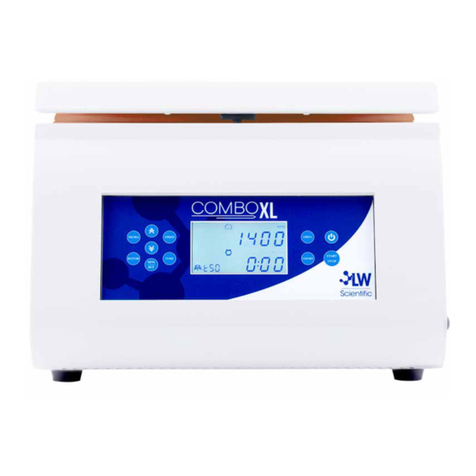
LW Scientific
LW Scientific ComboXL Centrifuge instruction manual
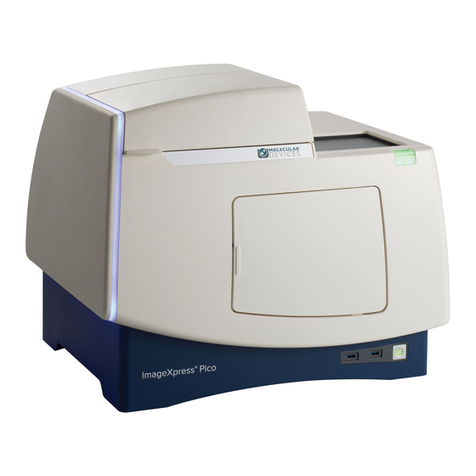
Molecular Devices
Molecular Devices ImageXpress Pico installation guide

Fisher Scientific
Fisher Scientific 11-718 instructions

Advanced Measurement Technology
Advanced Measurement Technology 273A user manual
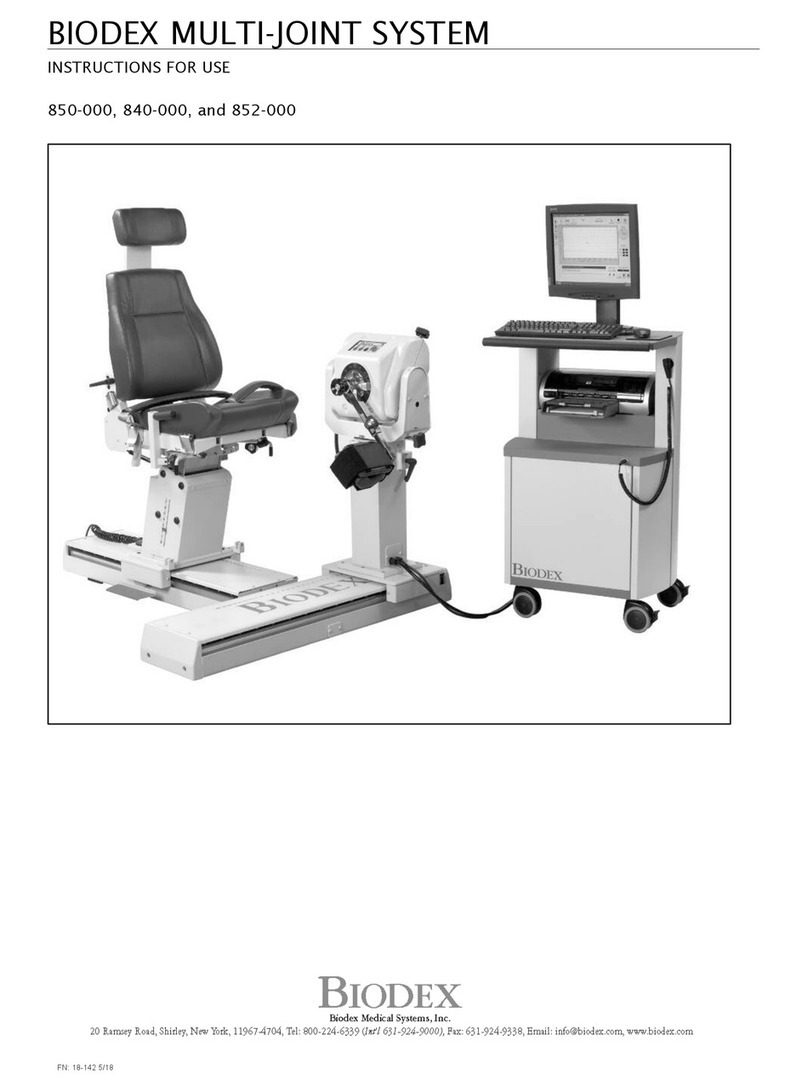
biodex
biodex 850-000 Instructions for use
